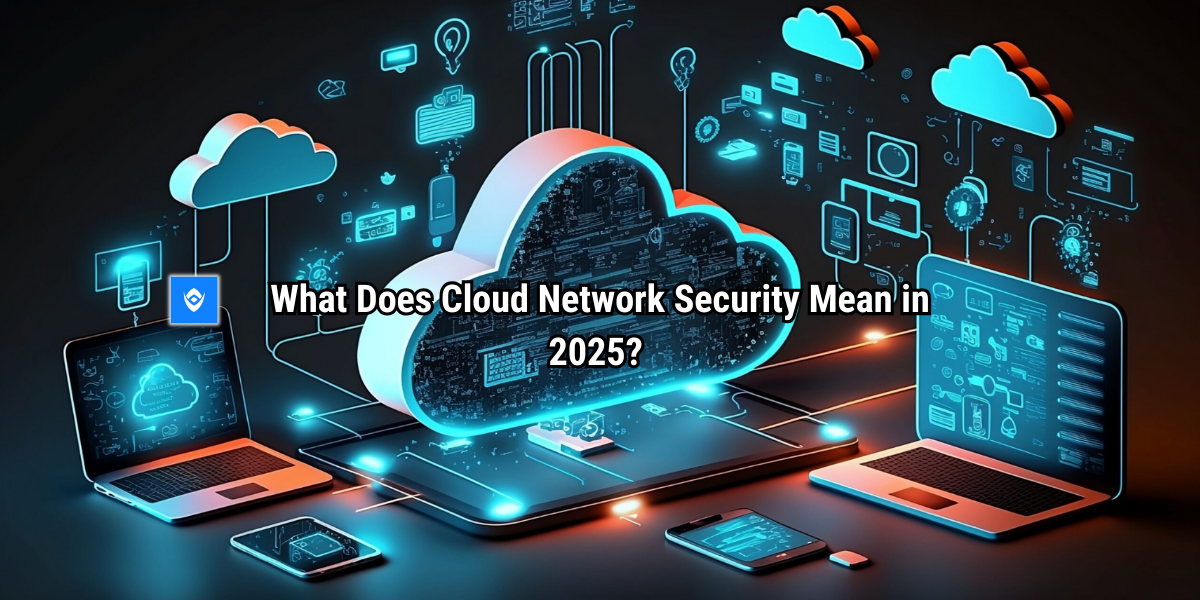
What Does Cloud Network Security Mean in 2025?
What Does Cloud Network Security Mean in 2025?
The digital shift to cloud infrastructure has become a necessity as the digital space rapidly advances. But while organizations enjoy the flexibility and cost-effectiveness of cloud environments, they also face a growing wave of security threats. Traditional perimeter-based defenses no longer cut it. What’s needed is a smarter, cloud-specific security approach.
That’s where Cloud Network Security comes in.
Cloud Network Security refers to a set of technologies, policies, and best practices designed to protect data, applications, and resources operating in the cloud. It serves as the first line of defense in modern enterprise cloud environments, safeguarding data while ensuring speed, compliance, and uninterrupted access.
Rather than relying solely on physical firewalls or isolated policies, cloud network security adapts to the dynamic nature of cloud computing, where data constantly flows between public clouds, private clouds, and hybrid setups. It controls who gets access, what data moves across the network, and how threats are detected and stopped.
In this article, we’ll break down everything you need to know: how cloud network security works, what features matter most, and how leading solutions like ExcelMindCyber are helping organizations stay ahead of modern cyber threats.

Start a Life-Changing Career in Cybersecurity Today
Why Is Cloud Network Security Important?
As organizations rapidly shift to the cloud, security risks don’t just follow; they multiply.
Cloud infrastructure offers speed, scalability, and global access, but it also introduces new vulnerabilities. Traditional on-premises firewalls and endpoint protections can’t secure workloads that move across public, private, and hybrid cloud environments.
That’s where cloud network security becomes essential.
1. Protecting Against Evolving Threats
Cyber attackers now exploit cloud-specific weaknesses, misconfigured storage buckets, insecure APIs, and lateral movement between cloud instances. Cloud network security uses advanced techniques like micro-segmentation, behavioral analytics, and AI-powered threat detection to stop these threats in real time.
Without this layer, organizations risk exposing sensitive data, even when they believe their cloud provider has things locked down.
2. The Shared Responsibility Model
Cloud providers (like AWS, Azure, or Google Cloud) only secure the infrastructure, not what you store or build on it. That’s your responsibility.
Cloud network security helps you meet your end of the deal: protecting your apps, users, and data.
Failing to implement it properly leaves massive gaps in security posture and regulatory compliance.
3. Enabling Compliance at Scale
From GDPR to HIPAA and NDPR, compliance requirements demand continuous protection of data in motion, in use, and at rest. Cloud network security tools provide visibility, enforce consistent security policies across environments, and log everything, making audits smoother and protecting your reputation.
4. Supporting Remote and Global Workforces
Cloud access isn’t limited to one office anymore. Remote users, third-party vendors, and multi-region teams all need secure access. Cloud network security enforces identity-based controls and Zero Trust policies, ensuring that only authorized users connect, and only to what they need.
RELATED: Cybersecurity vs Cloud Computing: A Comprehensive Comparison
How Does Cloud Network Security Work?
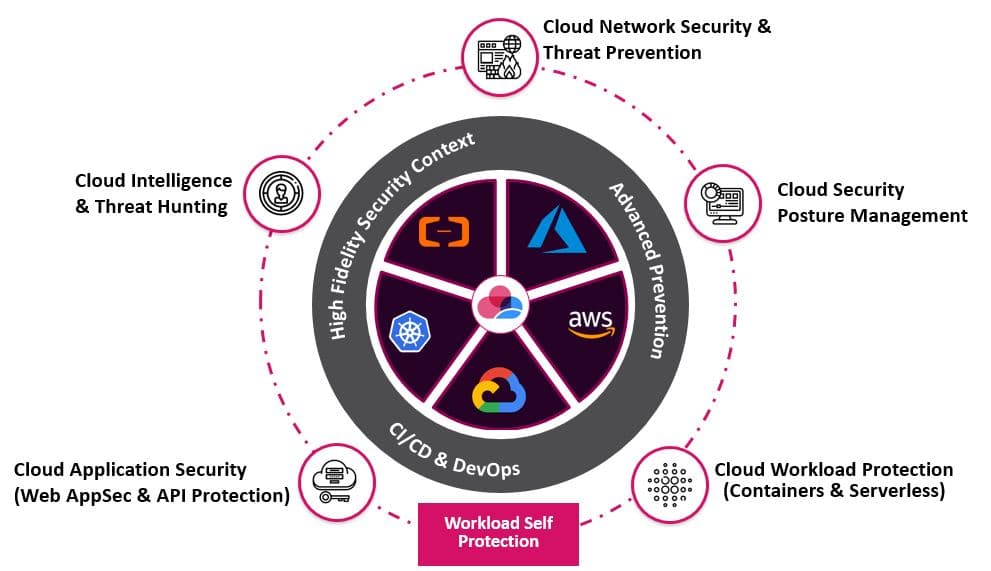
Cloud network security works by combining smart technologies, automated policies, and real-time monitoring to secure data flow and user access within cloud environments. Rather than relying on a fixed perimeter, it adapts dynamically to virtualized environments, hybrid infrastructures, and elastic workloads.
Here’s how it functions in a modern organization:
1. Virtual Security Gateways Replace Physical Firewalls
In the cloud, traditional physical firewalls are no longer applicable. Instead, cloud network security uses virtual security gateways. These act as software-based checkpoints that monitor traffic flowing:
- Between cloud workloads
- From the internet to cloud applications
- Across multi-cloud or hybrid infrastructures
These gateways can perform firewall functions, intrusion prevention (IPS), malware inspection, and threat detection, just like their hardware counterparts, but purpose-built for the cloud.
2. Micro-Segmentation for Access Control
Rather than allowing free movement across a cloud environment, security tools use network segmentation and micro-segmentation. This means cloud networks are divided into smaller zones, each with its own access rules.
So even if a hacker breaches one part of the system, they can’t move laterally. Sensitive data and workloads remain protected, and breaches are contained.
3. Integration with Cloud Platforms
Cloud network security isn’t standalone; it integrates directly with cloud service providers like AWS, Azure, or GCP. This allows:
- Native support for cloud APIs
- Seamless visibility into cloud-native traffic
- Enforcement of policies based on workload tags, identities, or locations
Modern tools are also compatible with containerized applications and orchestrators like Kubernetes.
4. Deep Visibility and Real-Time Monitoring
One of the challenges of cloud environments is reduced visibility. But cloud network security tools solve this with:
- Real-time traffic analysis
- Behavioral analytics
- Alerts on suspicious patterns
- Automated threat containment
These features give security teams insight into what’s happening inside the cloud, not just at its edges.
5. Automation & Policy Enforcement at Scale
As environments grow, manual oversight becomes impossible. That’s why cloud network security uses automation to:
- Enforce rules across workloads, users, and environments
- Respond instantly to threats
- Apply Zero Trust policies without manual input
This automation extends to compliance as well, tracking logs, policy violations, and access history for audits.
6. Zero Trust Network Access (ZTNA)
ZTNA is now a core principle in cloud security. It assumes no user or device is trusted by default, even inside the network.
Cloud network security tools apply strict authentication, identity-based access, and continuous verification before allowing any connection.
READ ALSO: What Is Third-Party Vendor Risk Management (TPRM)? Complete Guide
Key Features of Cloud Network Security Solutions
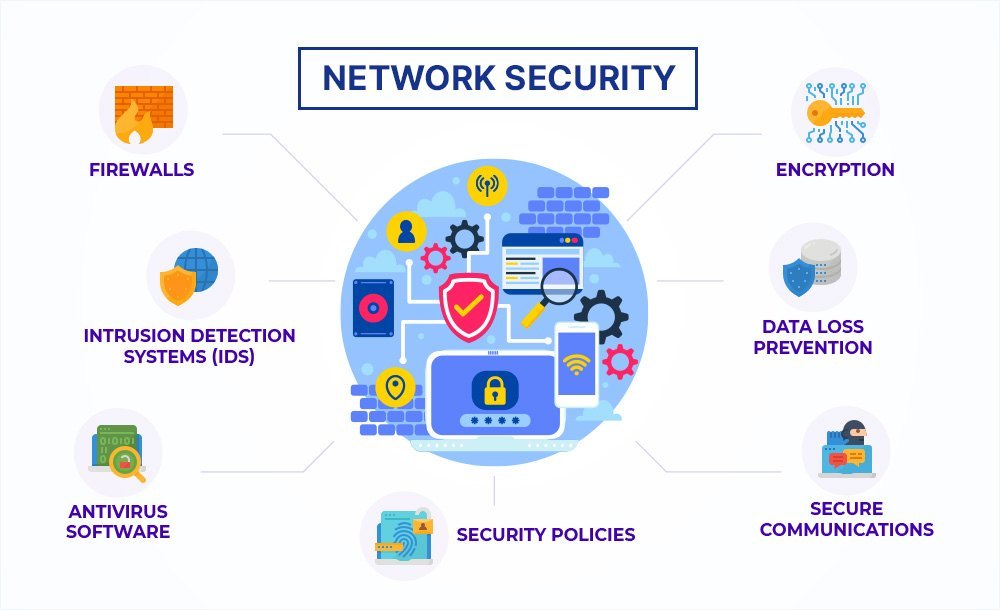
Not all security solutions are created equal, especially in the cloud.
Effective cloud network security solutions are more than firewalls or anti-virus tools. They must adapt to modern infrastructure, enforce policies at scale, and detect threats across dynamic, borderless environments. Here are the most critical features to look for:
1. Next-Generation Firewall (NGFW) Capabilities
Cloud-based NGFWs are built for application-level awareness. They go beyond traditional firewall rules to provide:
- Application control
- Deep packet inspection (DPI)
- Integrated intrusion prevention systems (IPS)
- Real-time threat intelligence feeds
This enables more accurate detection of threats hidden within legitimate traffic.
2. Intrusion Detection and Prevention (IDPS)
A robust IDPS system monitors network and system activities for known vulnerabilities and malicious patterns. It automatically blocks suspicious activity, giving your cloud architecture a proactive defense layer.
3. Zero-Day Attack Protection
Zero-day threats are vulnerabilities that are exploited before a patch exists. Advanced cloud security tools use machine learning, sandboxing, and heuristic analysis to detect unfamiliar behavior and stop attacks before damage is done.
4. Data Loss Prevention (DLP)
Whether your data is at rest or in motion, it must be protected from leakage or theft. DLP policies in cloud network security solutions:
- Identify sensitive data (like PII or credit card details)
- Prevent unauthorized transfers or downloads
- Alert on suspicious file movements
5. SSL/TLS Traffic Inspection
With most traffic now encrypted, attackers often hide within SSL/TLS flows. Modern solutions inspect this encrypted traffic without breaking privacy or performance, ensuring nothing slips past unnoticed.
6. Micro-Segmentation
This capability breaks your cloud environment into isolated zones, limiting lateral movement in case of a breach. Each segment has its own controls, making the system resilient even if one area is compromised.
7. Unified Security Management Console
Managing multi-cloud environments can become chaotic. A centralized dashboard helps:
- Monitor multiple environments (AWS, Azure, GCP)
- Enforce consistent security policies
- Correlate events and alerts in real-time
This “single pane of glass” management is crucial for efficiency.
8. Automation and Scalability
Modern cloud workloads change every minute. Your security must adapt instantly.
- Automate policy updates based on tags, workloads, or usage
- Trigger alerts or responses based on behavior
- Scale protection seamlessly with infrastructure growth
9. Third-Party and Native Integration
Whether it’s AWS Security Hub, Microsoft Defender, or Kubernetes, good cloud security solutions integrate well with your existing DevOps and SecOps stack, not work against it.
10. Secure Remote Access & Identity-Based Controls
As remote work becomes the norm, secure user access to cloud services is critical.
Solutions should include:
- Multi-factor authentication (MFA)
- Role-based access control (RBAC)
- Identity and access visibility (IAM)
Pro tip: Choose solutions that combine firewalls, DLP, IDPS, encryption, and micro-segmentation under one umbrella. This reduces tool sprawl and improves threat visibility.
SEE MORE: Vendor Risk Management (VRM) in 2025
Benefits of Cloud Network Security
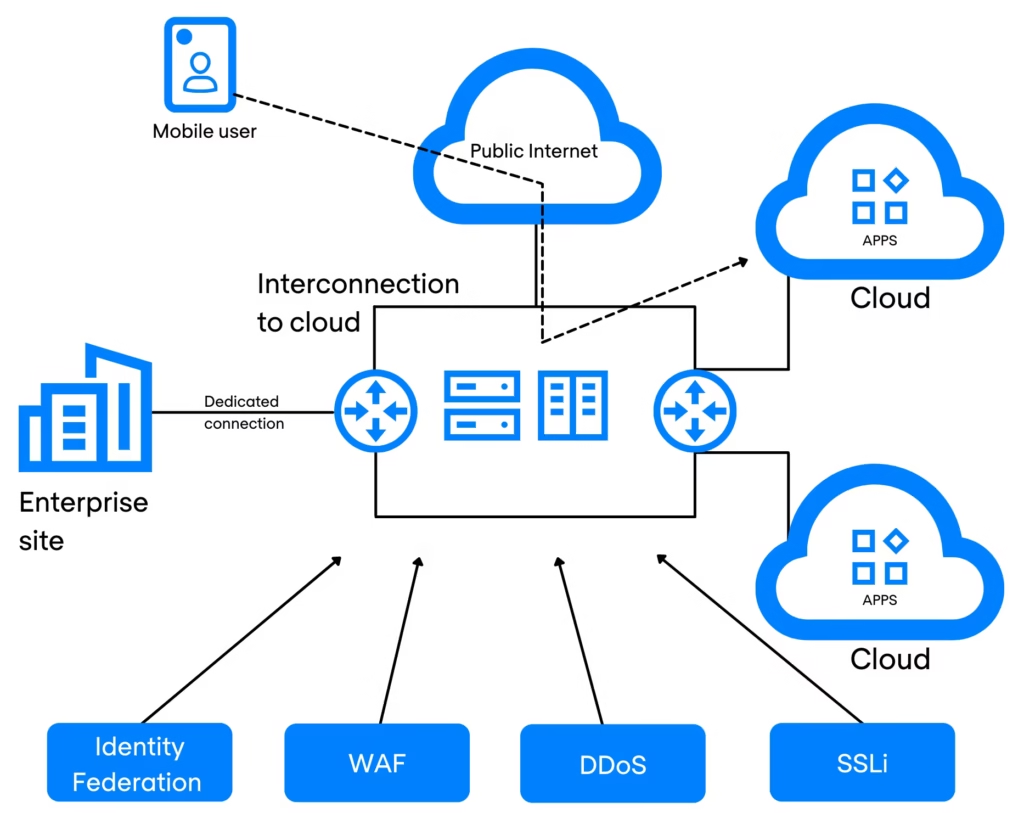
Securing the cloud goes beyond preventing threats; it concerns enabling growth, maintaining trust, and operating with confidence.
When implemented correctly, cloud network security delivers far-reaching benefits that impact performance, compliance, scalability, and brand integrity. Here’s what organizations gain:
1. Advanced Threat Protection
Modern cloud environments face everything from ransomware to zero-day exploits and insider threats. Cloud network security tools use:
- AI-driven behavioral analysis
- Threat intelligence feeds
- Automated quarantine and response
This ensures threats are identified early and blocked before causing harm, especially in distributed, multi-cloud setups.
2. Consistent Security Policies Across Environments
With hybrid and multi-cloud setups becoming the norm, consistent policy enforcement is crucial. Cloud network security:
- Synchronizes policies across AWS, Azure, GCP, and on-prem systems
- Reduces gaps in protection and compliance
- Makes security predictable, even in complex deployments
3. Security Automation at Scale
Manual intervention can’t keep up with cloud-speed operations. Cloud network security enables:
- Automated rule deployment
- Real-time threat response
- Scalable compliance enforcement
This reduces human error and allows IT teams to focus on higher-value tasks.
4. Centralized Visibility and Control
Security teams often struggle with fragmented monitoring tools. A strong cloud network security solution offers:
- Unified dashboards
- Real-time alerts
- Cross-platform log correlation
This improves response time, incident accuracy, and team collaboration across departments.
5. Lower Total Cost of Ownership (TCO)
Traditional network security can involve costly hardware, redundant tools, and maintenance. Cloud-native security:
- Eliminates most hardware costs
- Reduces operational overhead through automation
- Consolidates point solutions into one intelligent platform
Over time, this results in major cost savings without sacrificing protection.
6. Improved Compliance and Audit Readiness
With laws like GDPR, HIPAA, CCPA, and NDPR, staying compliant is non-negotiable. Cloud network security helps you:
- Maintain audit trails
- Automatically enforce regulatory controls
- Generate compliance-ready reports
You don’t just meet standards, you do so with confidence and ease.
7. Greater Business Agility and Innovation
When security is embedded into the cloud environment:
- Developers can deploy faster
- Teams can adopt new tools with confidence
- Innovation isn’t stalled by compliance concerns
Security becomes an enabler of growth, not a blocker.
READ: What Is Enterprise Risk Management (ERM)? Types, Pillars, Stakeholders
Differences Between Public and Private Clouds
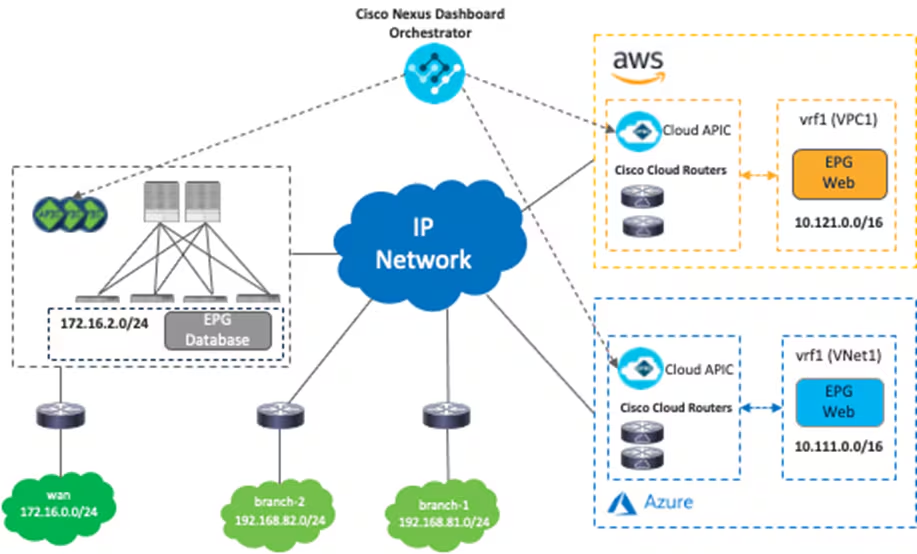
When considering cloud network security, it’s essential to understand the differences between public and private cloud environments, because the security approach changes based on the infrastructure you’re working with.
1. Public Cloud
Public clouds are hosted and managed by third-party providers like AWS, Microsoft Azure, or Google Cloud Platform (GCP). Resources are shared among multiple organizations, and services are accessed via the internet.
Pros:
- Scalable on demand — ideal for growing startups or global enterprises.
- Cost-effective — pay-as-you-go pricing with no need to manage infrastructure.
- Fast to deploy — no hardware setup required.
Security Considerations:
- Shared infrastructure raises multi-tenancy risks.
- You’re responsible for configuring IAM, encryption, and network controls—your cloud provider only secures the base infrastructure.
- Misconfigurations (like open S3 buckets) are the biggest risks.
Best for organizations that prioritize speed, cost-efficiency, and scalability, but must implement strict network segmentation, DLP, and Zero Trust policies to remain secure.
2. Private Cloud
A private cloud is dedicated to one organization. It can be hosted internally or by a third-party provider, but is not shared with others.
Pros:
- Greater control over infrastructure, compliance, and customization.
- Ideal for sensitive workloads, financial data, or industries with strict regulations (e.g., healthcare, government).
Security Considerations:
- Since the environment is isolated, attack surfaces are smaller.
- You manage and control all security layers, from perimeter firewalls to user access controls.
- However, it comes with higher operational and maintenance costs.
Best for enterprises with strict regulatory needs, legacy systems, or custom application requirements that demand fine-grained control over security.
3. Hybrid and Multi-Cloud Environments
Most organizations today don’t use just one cloud model. Instead, they adopt:
- Hybrid Clouds: Combine public and private clouds to balance control and scalability.
- Multi-Clouds: Use multiple public cloud providers (e.g., AWS + Azure) to avoid vendor lock-in and improve redundancy.
Security Implications:
- Increased complexity across networks.
- Need for centralized visibility, policy consistency, and cross-platform access controls.
- Must secure both North-South (in/out) and East-West (within cloud) data flows.
Cloud network security tools in these environments must integrate with all cloud providers, enforce policies uniformly, and provide full traffic inspection regardless of platform.
MORE: GRC Analyst vs SOC Analyst: Everything You Need To Know
Securing North-South and East-West Data Flows
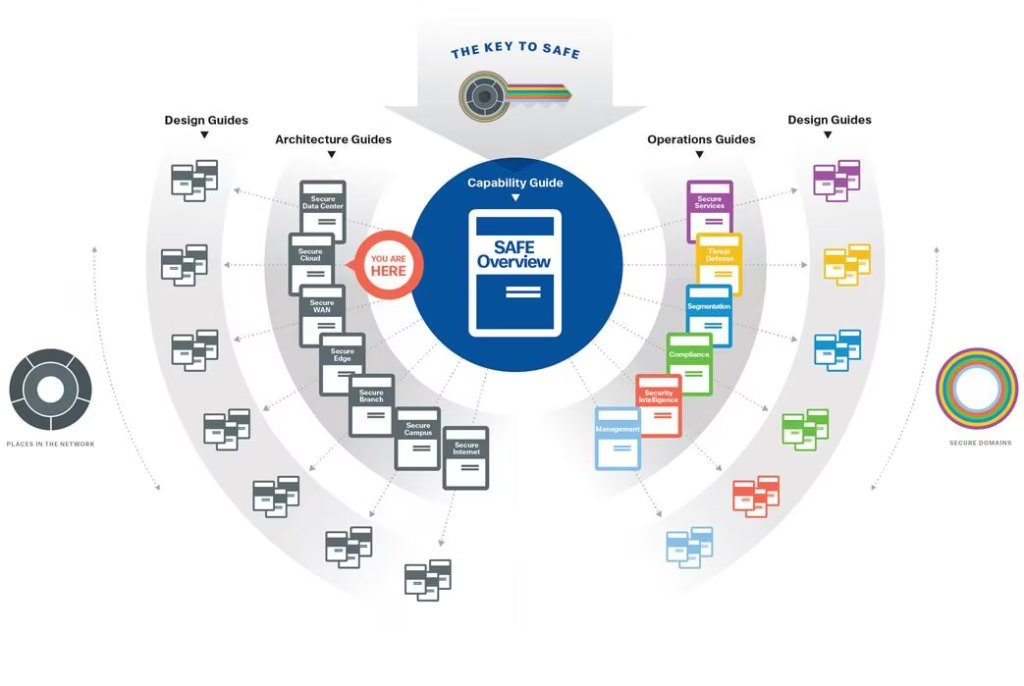
When it comes to cloud network security, securing all directions of data movement is non-negotiable. This involves two key traffic types:
- North-South Traffic: Data that flows in and out of the cloud environment, typically between users and applications or between cloud and on-prem systems.
- East-West Traffic: Data that moves within the cloud, between microservices, containers, virtual machines, or cloud instances.
Each direction carries its own set of risks, and both require dedicated security strategies.
Why Securing North-South Traffic Matters
North-South traffic is the primary entry and exit point for attackers. It includes:
- User login sessions from browsers or mobile devices
- API calls from external sources
- Data synchronization with third-party apps
If this data isn’t secured, attackers can:
- Intercept credentials (via man-in-the-middle attacks)
- Inject malicious payloads
- Exploit misconfigured public-facing APIs
Recommended Protections:
- Zero Trust Network Access (ZTNA) for user identity verification before any connection is allowed
- Web Application Firewalls (WAF) to filter and inspect external requests
- TLS/SSL encryption for all inbound and outbound traffic
- DDoS protection to block volumetric attacks that target cloud-hosted apps
Why East-West Traffic Is a Hidden Risk
Many breaches don’t start at the perimeter; they spread laterally inside the cloud once the attacker gets in. This is East-West traffic, and if left unchecked, it can:
- Allow malware to move from one cloud VM to another
- Let attackers pivot from dev environments to production
- Bypass detection by hiding within “trusted” internal flows
Recommended Protections:
- Micro-segmentation to isolate workloads and restrict traffic flow
- Behavioral analytics to detect abnormal movement or unexpected communication patterns
- Container firewalls and runtime protection for cloud-native workloads (especially in Kubernetes clusters)
- Egress filtering to restrict data from leaving services unnecessarily
Unified Defense: Monitoring Both Directions
Effective cloud network security doesn’t treat North-South and East-West as separate silos. It uses:
- Full traffic visibility
- Threat correlation across all flows
- Unified policy engines that apply access rules regardless of where data moves
This holistic view ensures that no blind spots exist, especially in multi-cloud or hybrid environments.
ALSO SEE: CompTIA Security Vs Google Cybersecurity Certification
Choosing the Right Cloud Network Security Solution
Not all cloud security tools will meet your business’s unique needs. Choosing the right cloud network security solution means selecting one that fits your infrastructure, aligns with your risk tolerance, and scales with your growth. Here’s what to look for:
1. Compatibility with Your Cloud Environment
Your chosen solution should integrate natively with your cloud service providers, whether it’s AWS, Azure, GCP, or a combination. It should:
- Support hybrid or multi-cloud environments
- Integrate easily with container orchestration tools like Kubernetes or Docker
- Handle both virtual machines and serverless functions
Check for compatibility with platforms you currently use or plan to adopt.
2. Centralized Management (Single Pane of Glass)
Cloud security is complex, but your interface shouldn’t be. Look for:
- A unified management dashboard that offers visibility across all workloads and environments
- Centralized policy control and reporting
- Real-time alerts and threat logs in one place
This is especially crucial for large teams managing different environments. The ability to correlate events across systems is a major time-saver during threat investigations.
3. Scalability and Automation
Cloud environments change fast. Your security solution must:
- Auto-scale as new resources are added
- Automate key processes like patching, threat detection, and compliance checks
- Adapt to workload spikes without compromising security performance
Choose a platform with strong APIs and automation hooks for CI/CD pipelines.
4. Regulatory Compliance Support
Look for solutions that help with frameworks like:
- GDPR
- HIPAA
- PCI-DSS
- NDPR
- ISO 27001
Features to expect include audit logs, compliance dashboards, data classification, and customizable access policies.
5. Proven Threat Detection and Prevention
The core function is security. Make sure the platform offers:
- Advanced threat intelligence
- Zero-day protection capabilities
- Tools for SSL/TLS traffic inspection
- Micro-segmentation to block lateral movement
Also, verify that it’s updated regularly with the latest threat signatures and tactics.
6. Ease of Deployment and Integration
A great product won’t help if it’s hard to set up. Look for:
- Support for infrastructure-as-code templates (e.g., Terraform, CloudFormation)
- Prebuilt integration modules for common environments
- A smooth onboarding process with documentation and training
Conclusion
Cloud computing is reshaping how organizations build, scale, and deliver digital services, but without strong cloud network security, that transformation comes at a dangerous cost.
As threats grow more sophisticated and compliance requirements tighten, organizations must evolve beyond perimeter-based thinking. Today, security is about dynamic, adaptive defense across every layer of your cloud architecture.
Cloud network security delivers exactly that. It helps you:
- Block modern threats like zero-day exploits and insider attacks
- Enforce consistent access controls across environments
- Stay compliant with evolving global regulations
- Gain deep visibility into east-west and north-south traffic
- Scale securely without slowing down innovation
When you’re protecting a public cloud deployment, a private Kubernetes cluster, or a multi-cloud environment, cloud network security ensures your data stays safe, your users stay protected, and your business stays resilient.
FAQ
What are the 4 types of cloud networking?
The four primary types of cloud networking include:
Public Cloud Networking – Uses shared infrastructure hosted by cloud service providers like AWS or Azure.
Private Cloud Networking – Built exclusively for one organization, offering more control and privacy.
Hybrid Cloud Networking – Combines public and private clouds, allowing data and apps to move between them.
Multi-Cloud Networking – Involves using multiple cloud service providers to distribute workloads and reduce dependency on a single vendor.
What is cloud networking with an example?
Cloud networking refers to managing and securing network resources, like virtual routers, firewalls, subnets, and gateways, within a cloud environment.
Example: A company uses AWS to host its app. It configures a Virtual Private Cloud (VPC) to isolate its network, sets up subnets for frontend and backend services, uses security groups for access control, and integrates a VPN to connect on-premise data centers to its cloud network securely.
What are the four types of cloud security?
The four main types of cloud security include:
Network Security – Protects cloud traffic using firewalls, IDS/IPS, and segmentation.
Identity and Access Management (IAM) – Controls who accesses what resources and enforces roles, permissions, and MFA.
Data Security – Involves encryption, tokenization, and secure data storage.
Compliance & Governance – Ensures adherence to regulations and standards (e.g., GDPR, HIPAA, NDPR).
What are the five pillars of cloud security?
The five foundational pillars are:
– Identity and Access Management (IAM)
– Data Protection (Encryption & DLP)
– Network Security (Traffic control & segmentation)
– Threat Detection & Response (Monitoring & incident handling)
– Compliance & Governance (Auditing, reporting, and policy enforcement)
These pillars work together to ensure confidentiality, integrity, and availability across the cloud environment.
